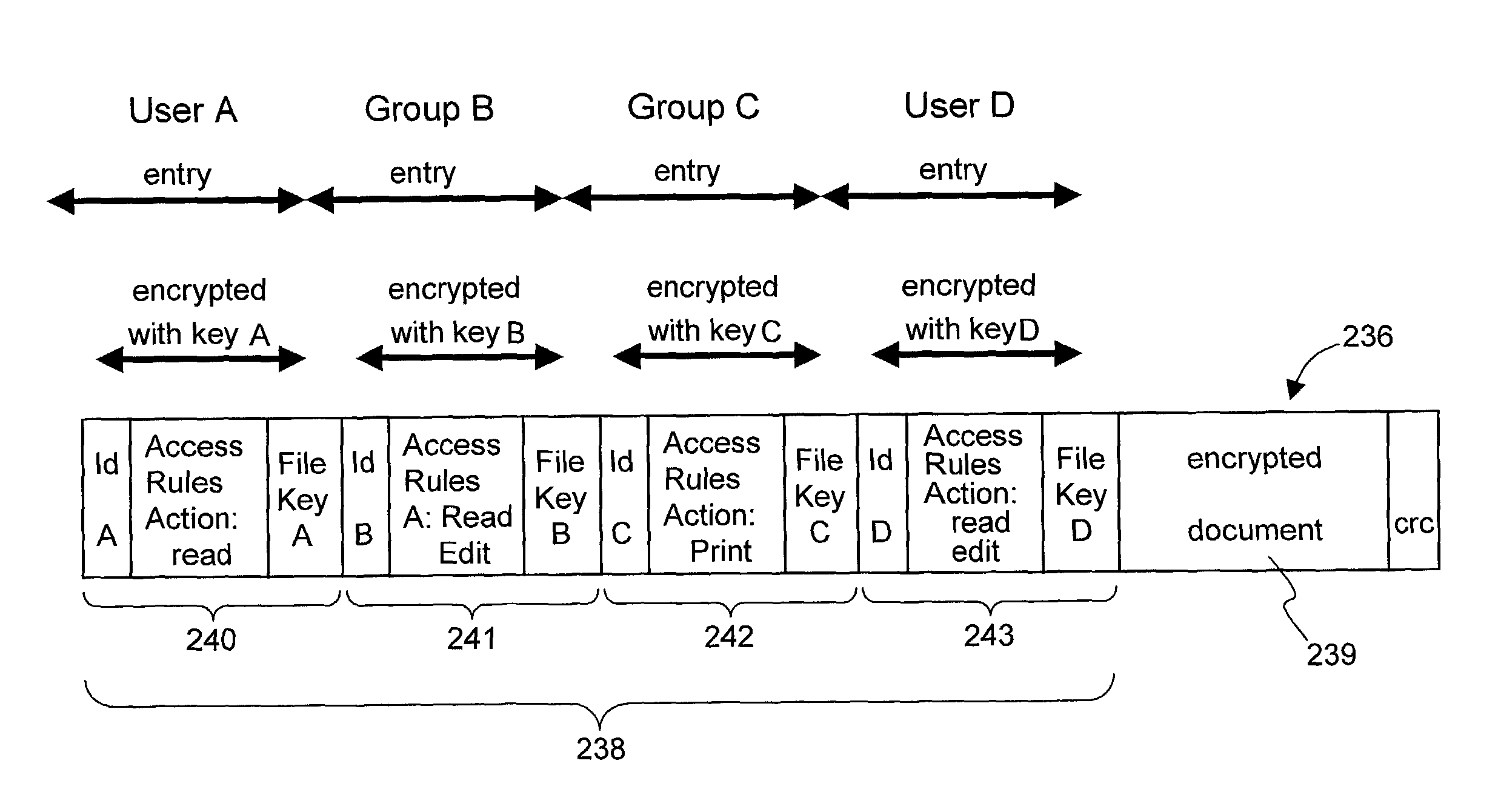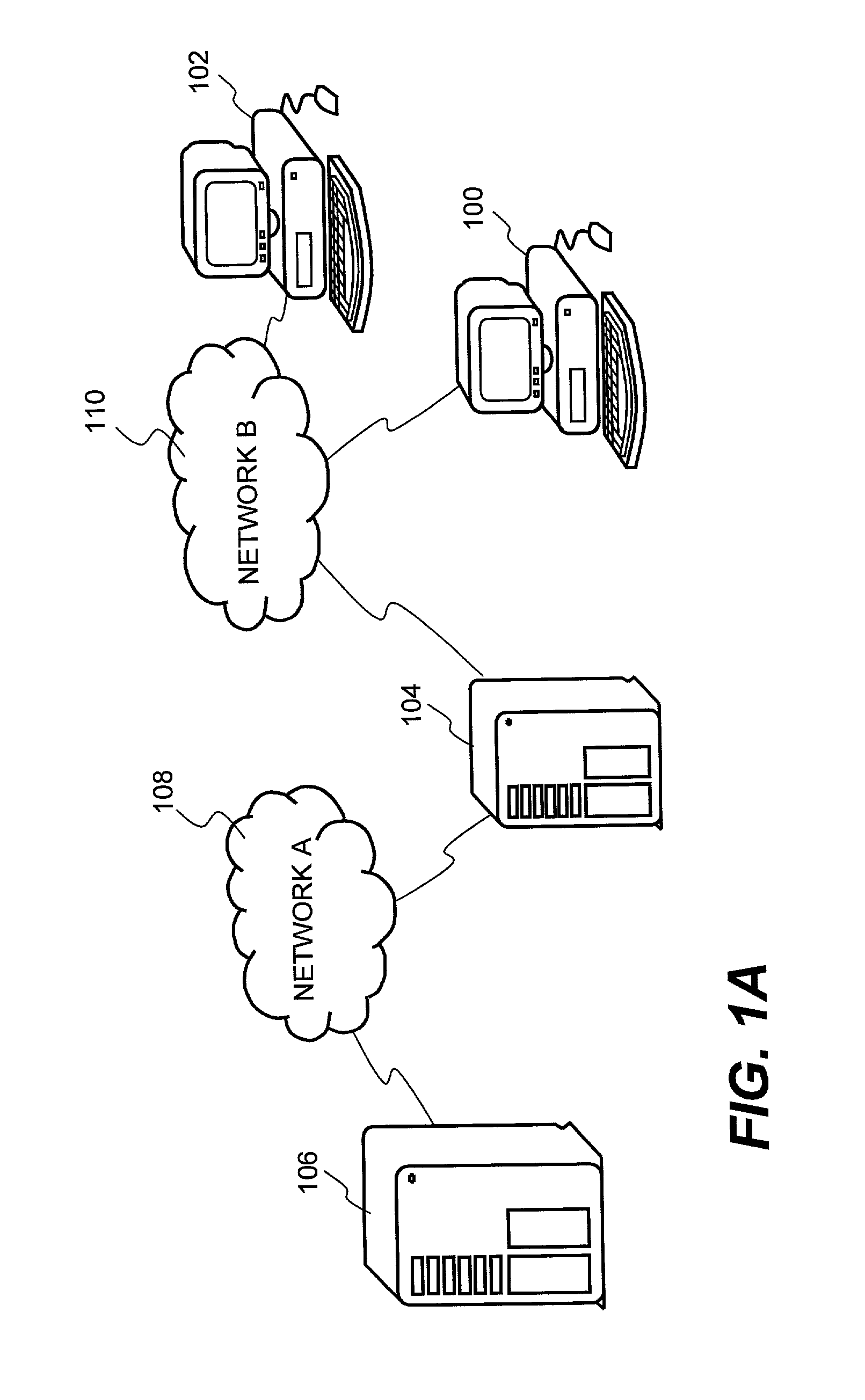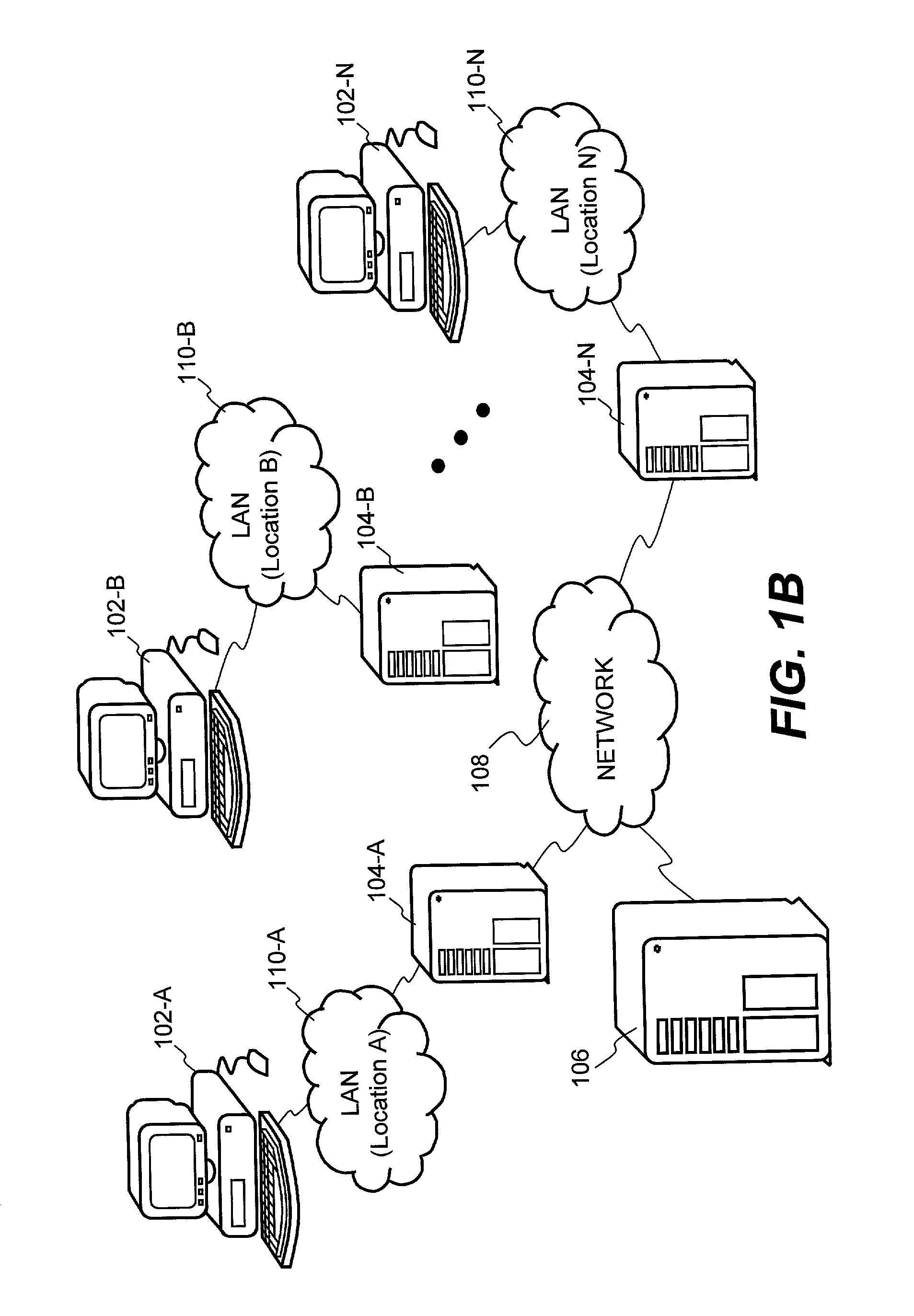System and method for providing multi-location access management to secured items
a multi-location access management and secured item technology, applied in the field of data protection, can solve the problems of significant greater element of risk to the confidentiality and integrity of information, inaccessible to the public, and unauthorized persons or machines that can intercept any information, so as to facilitate access control management and synchronization
- Summary
- Abstract
- Description
- Claims
- Application Information
AI Technical Summary
Benefits of technology
Problems solved by technology
Method used
Image
Examples
Embodiment Construction
[0054]The present invention is related to processes, systems, architectures and software products for providing pervasive security to digital assets at all times. In general, pervasive security means that digital assets are secured at all times and can only be accessed by authenticated users with appropriate access privileges. The present invention is particularly suitable in an enterprise environment.
[0055]In the following description, numerous specific details are set forth in order to provide a thorough understanding of the present invention. However, it will become obvious to those skilled in the art that the present invention may be practiced without these specific details. The description and representation herein are the common means used by those experienced or skilled in the art to most effectively convey the substance of their work to others skilled in the art. In other instances, well-known methods, procedures, components, and circuitry have not been described in detail t...
PUM
 Login to View More
Login to View More Abstract
Description
Claims
Application Information
 Login to View More
Login to View More - R&D
- Intellectual Property
- Life Sciences
- Materials
- Tech Scout
- Unparalleled Data Quality
- Higher Quality Content
- 60% Fewer Hallucinations
Browse by: Latest US Patents, China's latest patents, Technical Efficacy Thesaurus, Application Domain, Technology Topic, Popular Technical Reports.
© 2025 PatSnap. All rights reserved.Legal|Privacy policy|Modern Slavery Act Transparency Statement|Sitemap|About US| Contact US: help@patsnap.com



